Storm Shadow is the RAF’s long-range stand-off precision-guided cruise missile used against high-value and hardened targets.

The RAF describe the Storm Shadow Conventionally Armed Stand-Off Missile (CASOM) as;
This long-range air-launched and conventionally armed missile equips RAF Tornado GR4 squadrons and saw operational service in 2003 with 617 Squadron during combat in Iraq, before entering full service in 2004.
Armed with a specialist penetrating warhead, it is designed to destroy high-value and hardened targets at stand-off ranges.
Storm Shadow History
Storm Shadow has its roots in the 1982 Falkland Islands conflict.
Background
Staff work on the 1982 Long-Range Stand-Off Missile was eventually absorbed into the 1987 seven countries’ NATO Modular Stand-Off Weapon (MSOW) programme. The MSOW partner nations included the USA, UK, Spain, Canada, France, West Germany and Italy.
France and Canada withdrew, citing concerns over work share. MSOW requirements included three different size missiles and a modular payload concept.
The variants were for a short-range anti-tank, long-range static target and long-range mobile target.

Alliance Defence Corporation (ADC), headed by Rockwell, won the competition against General Dynamics, but the deal was far from done. The USAF effectively killed off the programme by withdrawing in 1989, reportedly over differences in the concept of operations with the RAF.
The USAF, in particular, wanted to drop the heavy (1,600 kg) long-range version that the RAF particularly wanted for Tornado. Differences over the ‘stealthiness’ of the design were also a concern for the USAF and others.
With MSOW dead, the RAF and others went back to the drawing board.
Competition
Matra and BAE Dynamics started a discussion about merging their guided weapon units in 1992.
The 1994 Staff Requirement (Air) 1236 defined the need for a stand-off missile to be used against hardened targets such as aircraft shelters or command and control nodes.
Several systems were proposed;
GEC Marconi/BAE Pegasus
The Marconi Avionics Hakim precision-guided bomb was available in two weights, both also having alternative guidance options. They were originally developed by ISC in the US to meet a 1984 requirement defined by the United Arab Emirates Air Force.
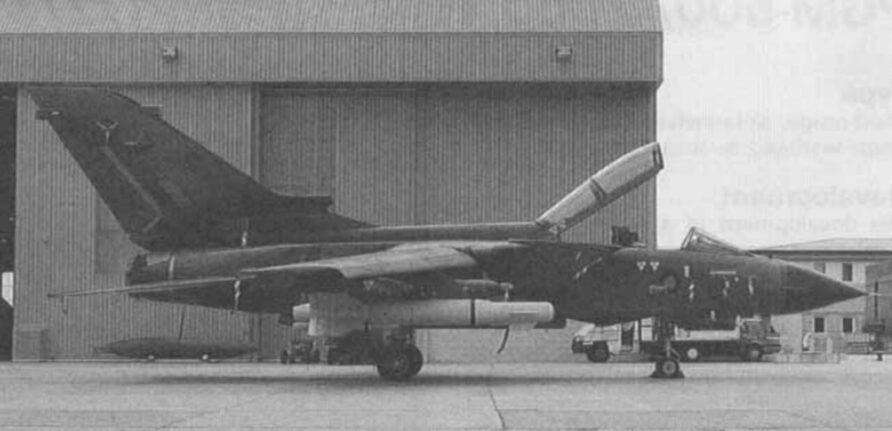
Ferranti purchased ISC in 1987 and was subsequently purchased by Marconi in 1991. Hakim was variously called by many names; Project Alpha, GMX, Felix, Pegasus and even Little Brother, entering service with the UAE in 1990 (Hakim A/B) and 1993 (Hakim C/D).

The PGM-4 variant of the Hakim B was equipped with a Teledyne Ryan micro turbojet and was redesigned so as not to breach Missile Technology Control Regime obligations, it was also called Centaur and offered to the RAF.
The range was reported to be 250 km.
ADM-141 TALD Variant
An armed and stretched version of the Brunswick Corporation Tactical Air Launched Decoy (TALD)
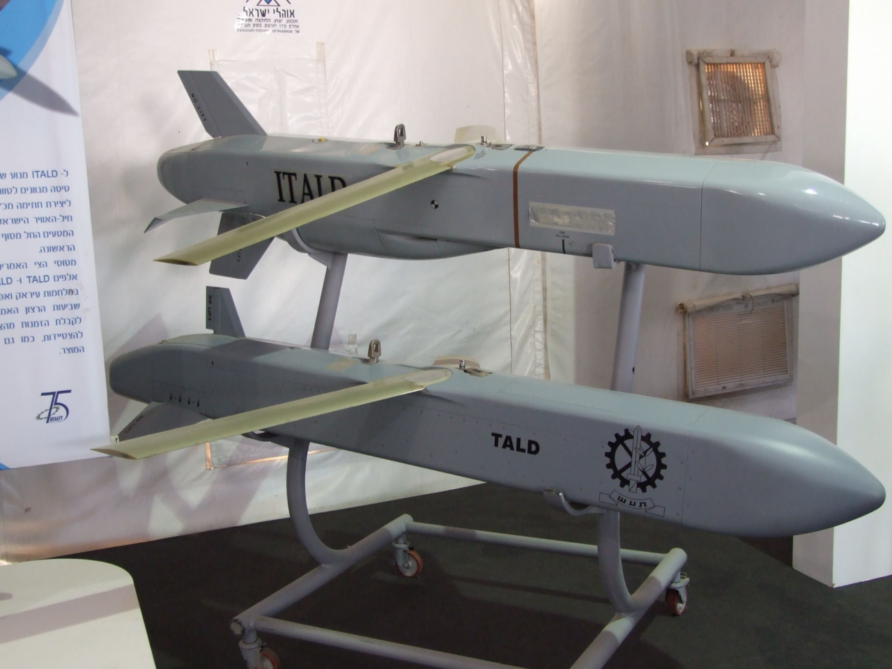
Hughes/Smiths Industries Airhawk
Airhawk was a shortened BGM-109 Tomahawk cruise missile.

It was fitted with a Thomson Thorn Lancer penetrating warhead, with an overall length of 4.66m. Weight was 907 kg with a reported range of 600 km.

McDonnell Douglas/Hunting Grand SLAM
Grand SLAM was derived from the SLAM-ER, with a range of 300 km and a 400 kg penetrator warhead. The warhead was derived from the US AGM-137 TSSAM programme.
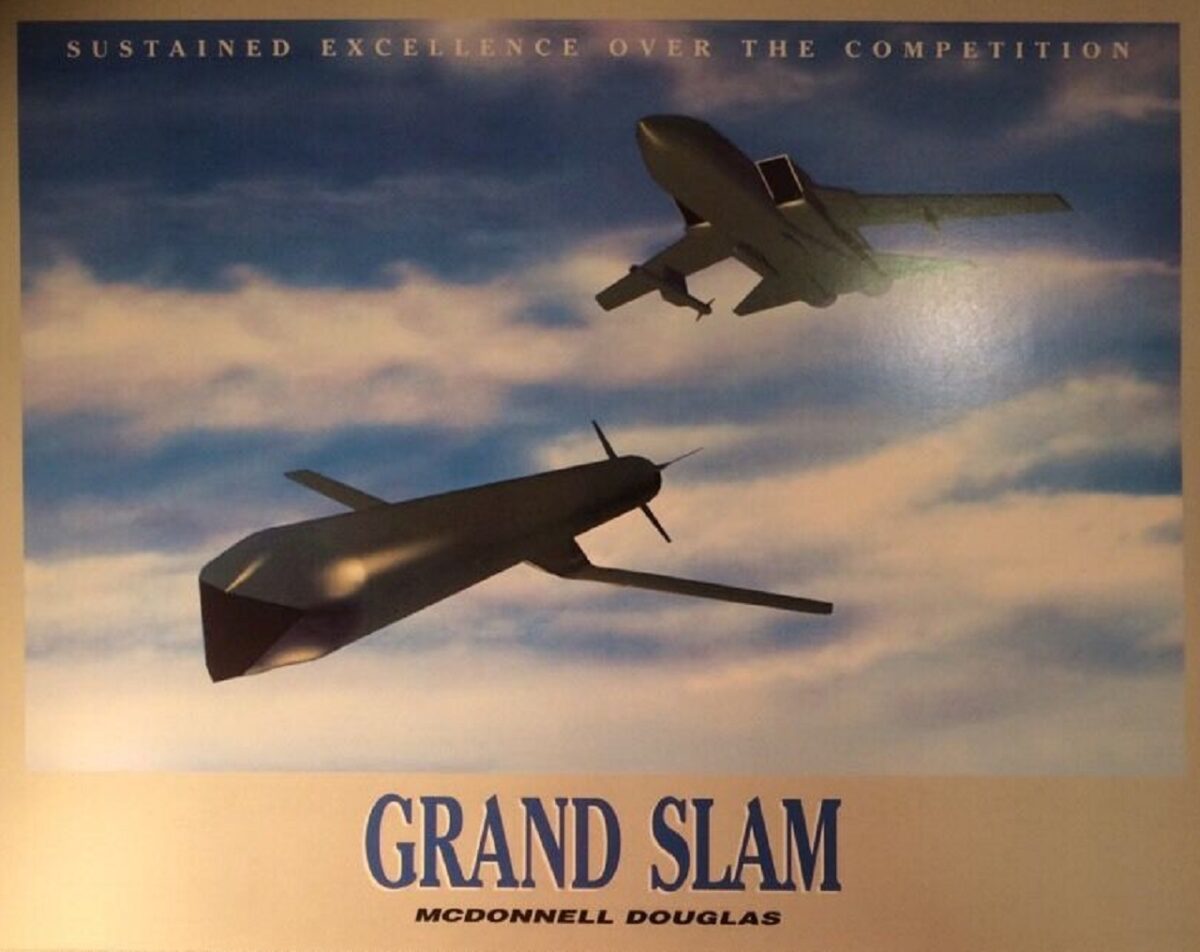
It was 5.31m long and weighed 1,100 kg. Wing span was 2.42m
Aérospatiale Asura (Air to SUrface RAmjet)
This was a high-speed and conventionally armed variant of the ASMP-C missile

Rafael Popeye 3 (Turbo)
Popeye 3 was a turbofan variant of the Popeye Air to Surface missile.
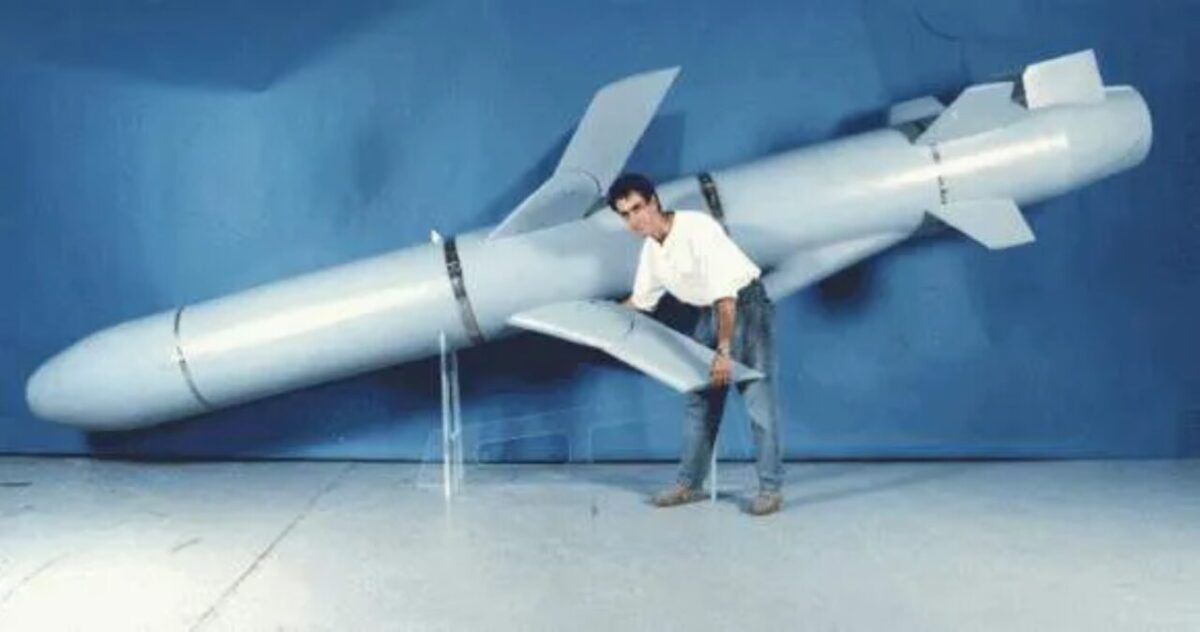
Daimler-Benz Aerospace/Saab Kinetic Energy Penetrating Destroyer (KEPD) 250/350
This would eventually go on to become Taurus KEPD in service with Germany, Spain, and the Republic of Korea.
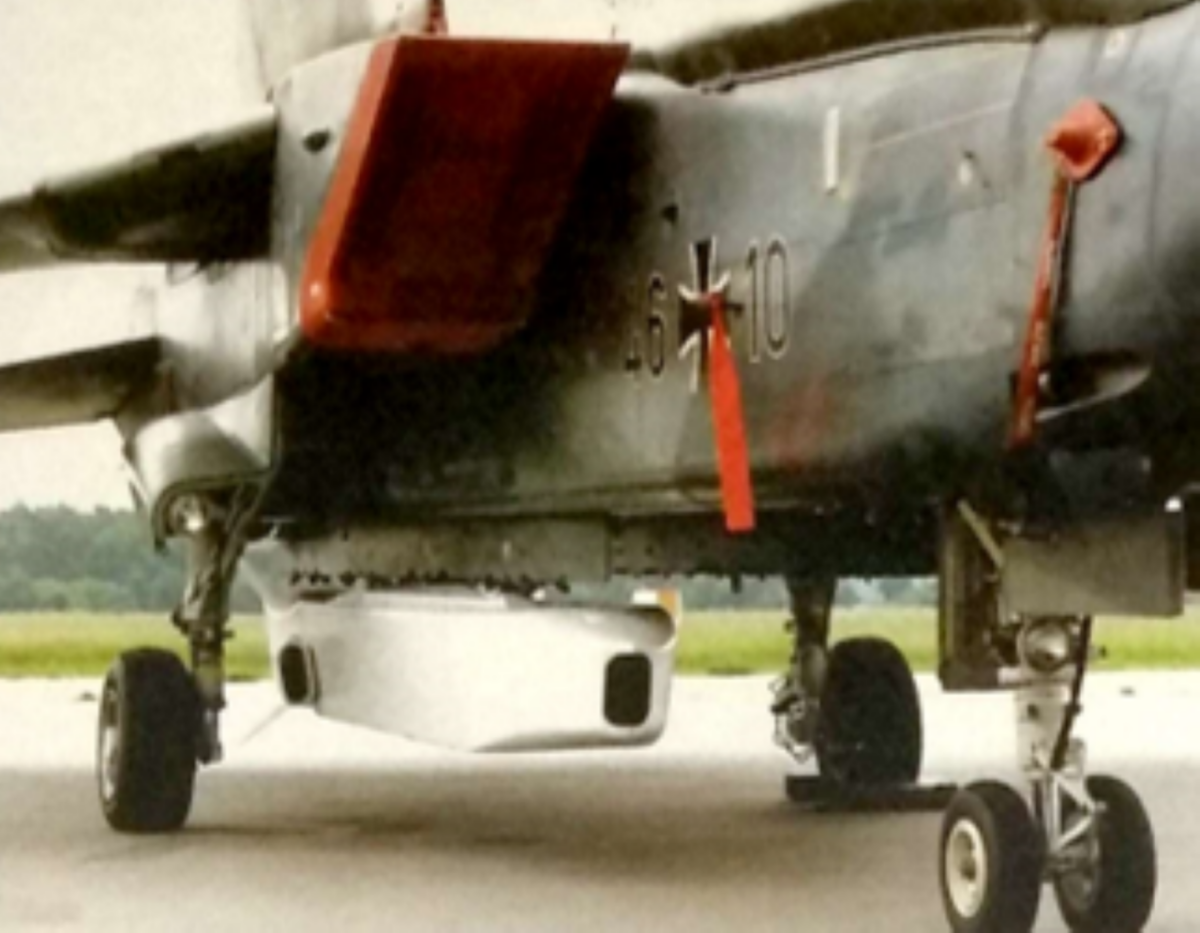
Texas Instruments/Shorts Joint Stand-Off Weapon (JSOW)
Storm Shadow
A derivative of the Matra Apache missile called Storm Shadow.
The APACHE (Arme Propu/sée A Charges Ejectables) Container Weapon System (CWS) was initially developed jointly by
France and Germany as part of a programme that included submunition dispensing systems for anti-armour and runway denial requirements.
Concept studies started in 1983, envisaging three variants with different ranges and payloads.
Flight trials in 1986, but Germany withdrew from the programme in 1988.
The Matra Apache was ahead of its time, the first of such a system in Europe, at 1,230 kg it was not small, but had a range of 140 km and could carry ten KRISS runway denial submunitions.
By 1991, the missile had evolved to a single-body turbojet-powered design but several payload options.
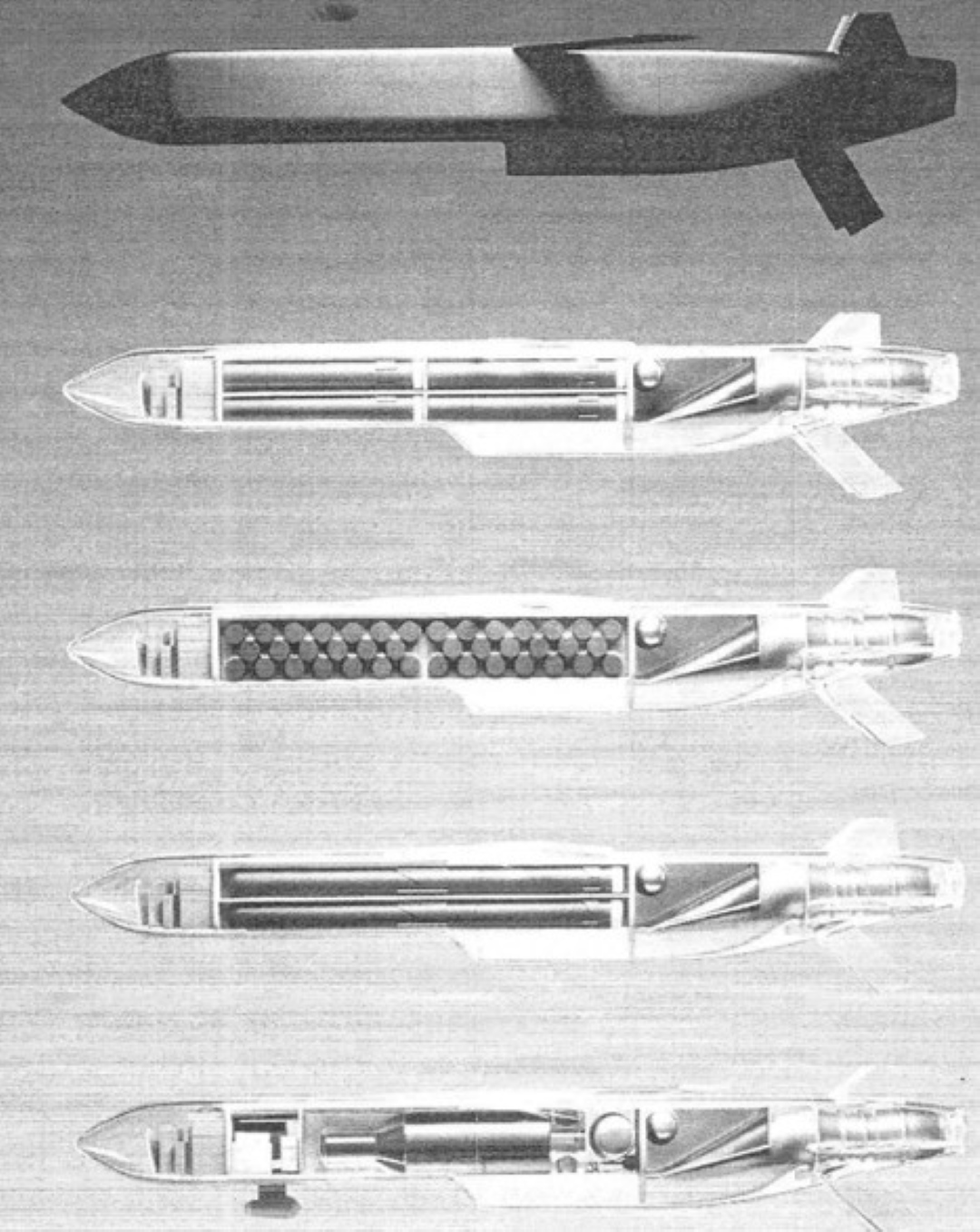
Matra proposed a 600 km variant called Apache-C.
Apache-C was eventually called the Armement de precision Tire Grande Distance (APTGD), changing to Systéme de Croisiére conventional Autonone tongue Portée de Precision (SCALP) later in the nineties (SCALP-EG and Storm Shadow are virtually identical)

A 250 km version was offered to the UK to satisfy the RAF’s CASOM requirement, based on a version of Apache called AI (Anti Structure), called Storm Shadow
Apache AI was also designed to meet a French Air Force requirement for a 250-400 km missile, able to defeat hardened targets.
Different industry groupings and partnerships emerged with pretty much every possible combination of new and developments of existing systems explored, even to the point of a proposal for a ‘Golden Eagle’, an enlarged version of Sea Eagle.
Multiple designs were also proposed by some bidders to allow the smaller Harrier to carry it.
CASOM was intended to arm Harrier, Tornado and EF2000 (Typhoon)
To complicate matters, in 1994, Matra offered the Apache C to the Royal Navy for the Surface to Surface Guided Weapon Requirement.
SRA 1236 was very much beset by politics, its selection would pave the way for the merger of BAE Dynamics and Matra; the French government had blocked the merger, contingent on Storm Shadow being selected by the MoD. If the MoD chose the US or Israeli solution, Saudi Arabia would not be interested or likely able to obtain it for its Tornado fleet.
CASOM was de-linked from the US Joint Air-Surface Stand-Off Missile (JASSM) requirements after pressure from US Industry, the two would go their own way.
Storm Shadow Selected
The £700 million contract to develop and manufacture Storm Shadow was signed in 1997 with Matra BAe Dynamics.
Germany then went its own way with the Taurus KEPD 350, a system broadly comparable to Storm Shadow.
The French MoD awarded Matra BAe Dynamics a Fr6 Billion contract in 1998 for 500 SCALP-EG (Emploi General) missiles in 1998.
Storm Shadow was selected by Italy in 1999 and some initial funding from the French MoD was used by Matra BAe Dynamics to investigate ground, sea and submarine launching options.
The first flight of Storm Shadow took place at the end of 2000 with more carried out over the coming years.

2002 flight test video
In 2002, France started the detailed development of a naval variant of Storm Shadow/SCALP-EG.
At the end of the project definition phase, MBDA had concluded that the best approach was to take components from SCALP but house them in a new airframe that could fit within a 535 mm standard torpedo tube.
The Royal Navy was fully briefed during the development, but it did not select the missile. For launching from the SYLVER Vertical Launch System, a booster would be used to eject the missile and turn it over to the direction of travel.
Storm Shadow Enters Service
During the opening stages of Operation TELIC, RAF Tornado GR.4’s fired 27 Storm Shadow missiles, despite it not being formally accepted into service at that point
The missile releases were conducted by Tornado GR.4 aircraft from the 617 Squadron, the Dambusters.
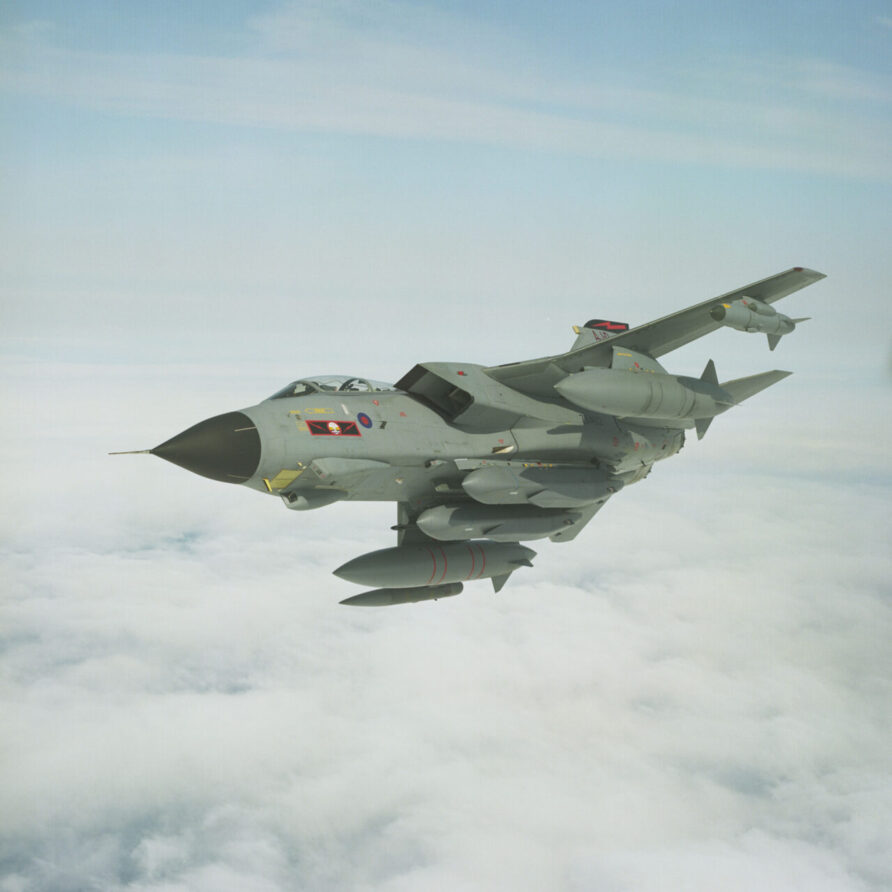
Storm Shadow was formally accepted into RAF service in October 2004, the CASOM Team Leader at the MoD commented;
Availability of this world-beating system represents a significant leap forward in technology and capability for the RAF. The state of the art navigation system, providing phenomenal precision, together with the specialised bunker-busting BROACH warhead has no known equivalent in the world today.
MBDA announced a series of potential upgrades for Storm Shadow in July 2004. The French MoD funded a €15m programme that demonstrated the potential for a one-way data link from the missile to launch aircraft that would relay information in real-time to allow some basic bomb damage assessment to be made.
Follow-on studies were intended to show how a two-way data link could be used to re-target the missile whilst it was still in flight.
Other options reportedly included an improved airframe design, a new warhead called HARDBUT and a new seeker. The Hard and Deeply Buried Target (HARDBUT) Next Generation Multiple Warhead System (NGMWS) was part of a wider joint Technology Demonstration Programme (TDP) funded by the MoD and Générale de l’Armement (DGA).
The CASOM project out-turned at £981 million, for what is reported to be a 900-missile stock.
Further Developments and Operational Use
In 2008, the MoD announced the Storm Shadow Capability Enhancement Programme (SSCEP).
Two enabling contracts have been placed to undertake the work associated with the assessment phase (AP) for complex weapons, announced on 15 July 2008. One of these contracts has been placed with MBDA (UK) Ltd and covers work on the Indirect Fire Precision Attack Loitering Munition (IFPA LM), Future Air-to-Surface Guided Weapon (Heavy) (FASGWH), Selected Precision Effects at Range (SPEAR), Future Local Area Air Defence System (FLAADS), and Storm Shadow Capability Enhancement (SSCEP) programmes.
https://hansard.parliament.uk/Lords/2008-09-29/debates/0809014000026/ArmedForcesComplexWeapons
Fit checks were also carried out on Nimrod MRA4

An initial test firing of the HARDBUT warhead was completed at the Biscarrosse test range in France on the 18th of May 2010, followed by another on the 14th of September 2010.

Storm Shadow was used in Operation ELLAMY, Libya 2011, by France, Italy, and the UK.
On 19 Mar 11, four Tornado GR4s launched on a historic 3,000-mile round trip to conduct a deep strike Storm Shadow attack on key Libyan installations. The aircraft returned to RAF Marham in the early hours of Sunday morning having achieved 8 direct hits from eight weapons delivered.
The MoD revealed that during Operational ELLAMY, the UK fired 80 Storm Shadow and Tomahawk cruise missiles, although they decided not to detail the quantities for each due to security concerns.
A 2011 Parliamentary Question revealed the cost of a Storm Shadow;
Tom Blenkinsop: To ask the Secretary of State for Defence what estimate he has made of the cost to the public purse of one Storm Shadow missile; and what assessment he has made of the value for money of the Storm Shadow missile. [49247]
Peter Luff: Storm Shadow provides the UK with a unique capability for precision strike against high-value hardened targets such as command bunkers without exposing aircraft and crews to high threat levels. The missile was procured in co-operation with France following an international competition. Storm Shadow missiles which were contracted for in 1997 are now held on the Ministry of Defence’s balance sheet at a value of some £790,000 per missile. This figure includes the costs of producing an integrated weapon system and not just the purchase cost of the missile. In addition, a further £160 million was incurred by the UK in development costs.
Flight trials of the Storm Shadow on Typhoon took place in November 2013, the contracted cost for Typhoon/Storm Shadow integration is £120 million.
The UK/France Defence and Security Summit in 2014 produced some programme decisions, including this one on Storm Shadow/SCALP
Progress has also been made on the SCALP-EG and Storm Shadow refurbishment and upgrade programme where both governments have agreed to share data associated with national concept and assessment phase programmes. We aim to agree on a Memorandum of Understanding for staffing by early summer 2014. Looking further ahead, we continue to work to progress the joint concept study assessing possible solutions to meet our long-term requirements to replace Harpoon, Exocet, and Storm Shadow/SCALP. The concept study is due to complete later this summer
This new missile is notionally designed to meet the SPEAR Cap 5 requirement, intended to be in service between 2030 and 2035.
In September 2014, a Parliamentary Question revealed Storm Shadow related details;
Andrew Rosindell: To ask the Secretary of State for Defence what progress has been made on development of the Storm Shadow stand-off weapon; what assessment he has made of its potential advantages to the UK’s defence capabilities; and if he will make a statement. [207657]
Mr Dunne: Storm Shadow continues to provide the UK with a unique capability for precision strike against high-value hardened targets without exposing aircraft and crews to higher than necessary levels of risk.
The Storm Shadow Mid Life Refurbishment concept phase is considering options to maintain the Storm Shadow Weapons System Capability in order to meet our planning requirements. We have agreed to exchange information with France on our respective national refurbishment and upgrade programmes for Storm Shadow/SCALP EG (the French name for Storm Shadow), underpinned by a Memorandum of Understanding that was signed at the Farnborough International Air Show in July 2014.
I announced in July that the Storm Shadow is to be integrated into the RAF’s Typhoon aircraft to enter service in 2018.
A month after that, Janes confirmed the name of the joint UK/France missile would be Future Cruise and Anti-Ship Weapon (FCASW) / Futur Missile Antinavire/Futur Missile de Croisière (FMAN/FMC).
The first release of a Storm Shadow missile from a Typhoon was completed in November 2015.
STORM SHADOW adds attack stand-off capability to TYPHOON which now really accomplishes every possible role in the combat scenario. The aircraft retains excellent performance in an incredible low pilot workload cockpit environment, essential for a single-seat multirole aircraft,” Enrico Scarabotto, the Italian Chief Test pilot who flew the IPA2, said, while Steve Greenbank, Director of Aircraft Programmes for Military Air & Information, BAE Systems, commented on the METEOR trials: “These latest METEOR firing trials are another step forward in the integration of the missile onto the TYPHOON aircraft, demonstrating they can operate safely, accurately and effectively.”
The MoD confirmed that Storm Shadow integration had been dropped for the UK’s F-35B in January 2016, instead, likely to concentrate on the SPEAR Capability 5 in the longer term.
Storm Shadow was a threshold weapon in the original F-35 (Joint Combat Aircraft) Operational Requirements Document (ORD).
UK Carrier Strike capability was then centred on the QE Class aircraft carriers, and the F-35B, but they will have no stand-off deep strike capability against hardened targets.
Work towards full qualification for Storm Shadow in Typhoon continued as part of the P2E package, intended to be complete by 2018, in time for Tornado OSD in 2019.
In early July 2016, the MoD confirmed a support contract award for Storm Shadow;
MOD has awarded a £28 million contract to support a long-range missile used by RAF Tornados and currently being integrated onto Typhoon aircraft. The contract with MBDA to support the missile over the next 5 years will ensure regular maintenance and repair of the weapon system, keeping it in a safe condition and at a high state of readiness for deployment.
The MoD has also confirmed Storm Shadow was used against an ISIS target, specifically several bunkers.
Intelligence had determined that Daesh were using a large concrete bunker in western Iraq as a weapons facility. Due to the massive construction, built during the Saddam era, it was decided to use four Stormshadow missiles against it, as the weapon has particularly good capabilities against such a challenging target. The missiles were launched on Sunday 26 June by two Tornados, all four Stormshadows scored direct hits and penetrated deep within the bunker.
By then, Storm Shadow was in service (or ordered) with France, the UK, Italy, Greece, Qatar, Saudi Arabia, UAE (Black Shaheen variant) and Egypt (Black Shaheen variant)
A good background article on Black Shaheen, including speculation about range, is at this link
Usage figures were updated in September 2016 with the publication of the Parliamentary Defence Select Committee Report on Operations Against Daesh.
Four were used against targets in Iraq.

Storm Shadow planned to be subject to a Mid-Life Refurbishment (MLR) that met the SPEAR Capability 4 requirement, with a then planned start date of 2017.
This would take Storm Shadow to its planned out-of-service period of around 2030 when it will be replaced with the SPEAR Capability 5 system, notionally, the UK/France Future Cruise and Anti-Ship Weapon (FCASW) / Futur Missile Antinavire/Futur Missile de Croisière (FMAN/FMC).
The MLR was formally announced in March 2017.
Minister for Defence Procurement Harriett Baldwin has today announced a £146 million contract with MBDA to regenerate an air-launched missile, alongside her French counterpart Laurent Collet-Billon. The shared deal with MDBA will see the UK’s Storm Shadow and France’s SCALP missiles updated so they remain fit for purpose and ready for operational use. During an inward visit by Laurent Collet-Billon, the Minister confirmed the strong partnership with France in a series of meetings at Lancaster House. The collaboration is providing a £50 million saving for both sides. The contract will keep the missile in service for the next decade and beyond and help to sustain around 60 UK jobs. Storm Shadow is a combat-proven, long-range, precision cruise missile, already in service with RAF Tornados, deployed recently against Daesh in Iraq.
The £146 million contract includes the refurbishment of the turbojet engine, an upgrade of the navigational system, and a like-for-like replacement of items such as the cabling, seals and gaskets, especially those that are life-expired.
An image of SPEAR Capability 4 flight testing, the Storm Shadow MLR, was released.

In March 2021, the MoD confirmed the first operational firing of a Storm Shadow from an RAF Typhoon against targets in Iraq.
The Royal Air Force is continuing to conduct airstrikes as required to assist the highly capable Iraqi Counter-Terrorism Forces to prevent Daesh from re-establishing a meaningful presence in Iraq. he caves identified were assessed to be particularly difficult targets and two RAF Typhoon FGR4s were therefore tasked to conduct strikes in support of ground forces from the highly-capable Iraqi Counter-Terrorism Service
In 2022, Janes reported that the Selected Precision Effects at Range (SPEAR) Capability 4, the Storm Shadow Mid-Life Upgrade, was approaching completion, having been announced 5 years earlier.
After a great deal of press speculation, the MoD announced in May 2023 that it had supplied Ukraine with Storm Shadow.
In an oral statement to the House of Commons, Defence Secretary (Ben Wallace MP) said
In December, Mr Deputy Speaker, I wrote to Russian Defence Minister Shoigu and set out the UK government’s objection to the deliberate targeting of civilian infrastructure. And that further attacks – contrary to International Humanitarian Law – for example, the Principle of Distinction, codified in Articles 48, 51, and 52 of the Additional Protocols to the Geneva Convention, would force me to consider donating more capable weapons to Ukraine, so they may better defend themselves within their own territory.
Unfortunately, Russia has continued down this dark path. This year, Russia’s leadership has continued to systematically target civilians and civilian infrastructure with bombs, missiles and drones. More medical facilities were targeted in January than in the previous six months combined.
It has bombed power facilities in Kyiv, Kharkiv, Ivano-Frankivsk, Lviv, Zaporizhzhia and Odesa oblasts. Incidents of civilian casualties have increased; especially in areas close to the frontline, such as Kherson and Bakhmut – a city now reduced to a smoking ruin. In January, a block of flats in Dnipro was wiped out by a 5.5 tonne Russian AS-4 KITCHEN missile – probably causing 124 casualties, including 45 fatalities. In March, a five-storey apartment block in Zaporizhzia was attacked with a S-300 missile – almost completely destroying the building. And between April 27 and May 2, Russian forces conducted strikes against Ukraine using Kh-101 and Kh-555 long-range Air Launched Cruise Missiles. Despite Kremlin claims that it is targeting Ukraine’s “military-industrial facilities” one of the buildings struck was a nine-storey apartment block. The salvo left 23 dead and dozens more injured. Last week, Russian shelling struck residential buildings, and on Monday they bombed a Red Cross warehouse full of humanitarian aid. And drone footage from Bakhmut appeared to show white phosphorus raining down on a city ablaze. The use of incendiary weapons, which burn at 800 degrees Celsius, within concentrations of civilians is a contravention of Protocol 3 of the Convention on Certain Conventional Weapons.
Mr Deputy Speaker, as I have said many times in the past we simply will not stand by while Russia kills civilians. We have seen what Ukrainians are able to do when they have the right capabilities. In recent days, 30 Shahed drones have been shot down. The Ukrainian Air Force say 23 out of 25 cruise missiles fired from sea and land have been downed. And we have had confirmation from Lieutenant General Oleschuk, the Ukrainian Air Force Commander, that even Russia’s much-vaunted AS-24 KILLJOY air launched hypersonic ballistic missile has been brought down.
That is why the Prime Minister and I have now taken the decision to provide longer range capabilities.
In December, I informed the House that I was “developing options to respond to Russia’s continued aggression in a calibrated and determined manner”.
Today, I can confirm that the UK has donated Storm Shadow missiles to Ukraine. Storm Shadow is a long-range conventional precision strike capability. It compliments the long-range systems already gifted, including HIMARS and Harpoon missiles, as well as Ukraine’s own Neptune cruise missiles and longer-range munitions already gifted.
The donation of these weapon systems gives Ukraine the best chance to defend themselves against Russia’s continued brutality. Especially, the deliberate targeting of Ukrainian Civilian Infrastructure, which is against International Law. Ukraine has a right to be able to defend itself against this. Their use of Storm Shadow will allow Ukraine to push back Russian forces based within Ukrainian Sovereign Territory.
I’m sure the House will understand that I will not go into further details of the capability. But while these weapons will give Ukraine new capability, members should recognise that these systems are not in the same league as the Russian AS-24 KILLJOY hypersonic missile or Shahed Iranian one-way attack drones, or their Kalibr cruise missile with a range of over 2,000km. Roughly 7 times that of the Storm Shadow missile.
After much speculation, imagery emerged of Storm Shadow fitted to Ukrainian SU-24 ‘Fencer’ aircraft, apparently using ex Tornado pylons.
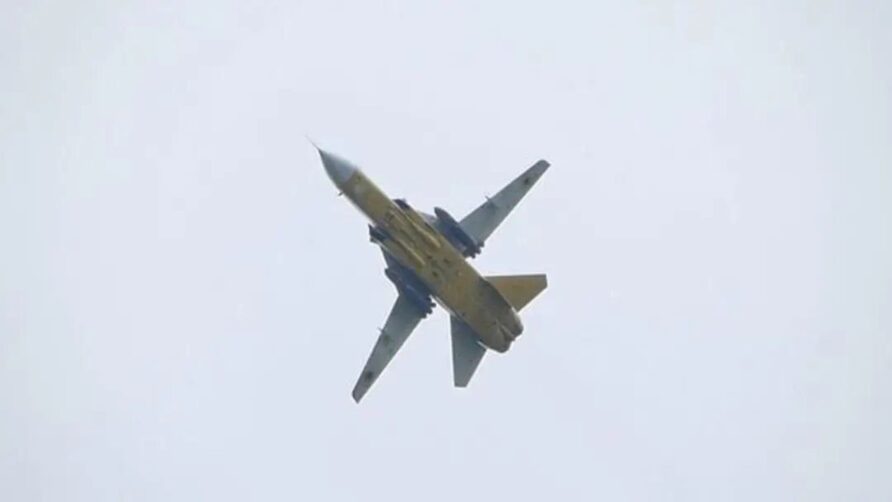
Storm Shadow strikes and missile remnants continued to be reported through 2023, and by mid-2023, it was speculated that over 125 missiles had been fired at Russian targets in Ukraine.
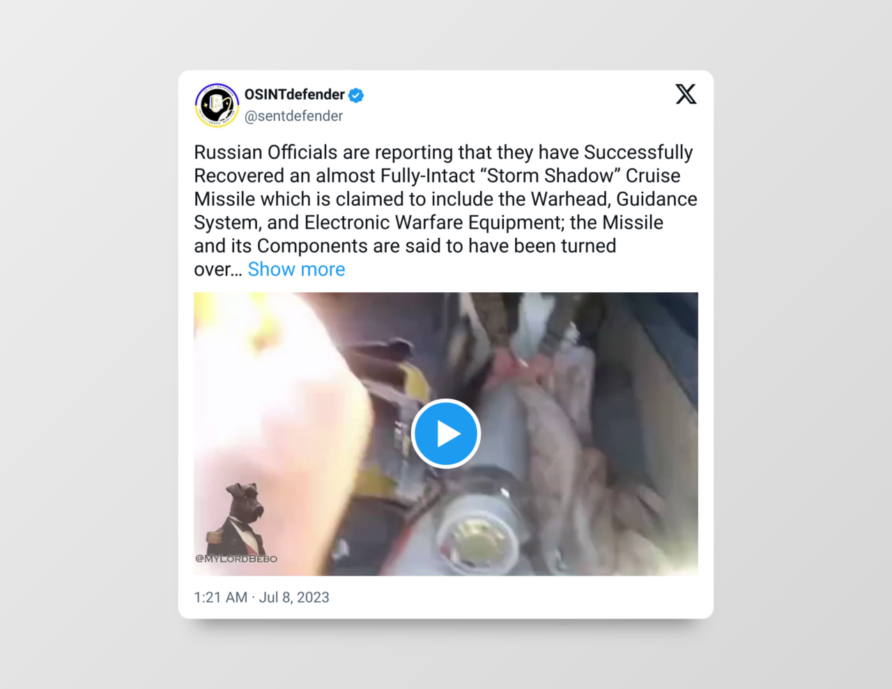
Storm Shadow (and SCALP/EG) continued to be used by Ukraine in 2024, and it was also revealed that Italy had donated some of their stock as well.
In a written response to the Defence Select Committee report, ‘Ready for War’, in April 2024, the MoD stated
To date investments include support to deliver a large purchase of 155mm munitions, building storm shadow stockpiles, supply chain mapping, wargaming, enhancements to a range of critical infrastructure, and medical stockpiles.
In addition to these uplifts, we have placed almost £1Bn in contracts to replenish UK stocks of equipment and munitions already granted to Ukraine. Contracts have been placed to replenish UK stockpiles include Next Generation Light Anti-Tank Weapons; Starstreak High Velocity Missiles; Lightweight Multirole Missiles; Javelin missiles; Brimstone missiles; 155mm artillery rounds; and 5.56mm rifle rounds
There was a great deal of speculation about Storm Shadow production but no official confirmation beyond that above.
In November 2024, the Financial Times reported
Ukraine has launched British-made Storm Shadow missiles at military targets in Russia for the first time, according to three people familiar with the matter.
Affiliate link

Storm Shadow Capabilities
Storm Shadow is a stand-off air-launched cruise missile designed to destroy hardened and buried targets.
It weighs 1,300kg, is 5.1m long and has a width of approximately 0.5m, with wings extended, 3m.

Using a Turbomeca Microturbo TRI 60-30 turbine engine, it has a range that is variously reported but generally accepted to be between 250 km and 300 km, although many sources suggest up to 560 km. This stand-off range allows the UK to attack targets without entering the engagement zone of anti-aircraft weapons.
Once released, wings deploy and using its GPS/INS and Terrain Profile Matching (TERPROM) navigation system guide the missile to the target area at a low level using terrain avoidance and masking. On the final approach, the nose cone is jettisoned, and the infrared sensor guides the missile to the impact point, performing terminal manoeuvre as required.
This image recognition terminal guidance system is extremely accurate, there have been reports of Storm Shadow missiles following each other down the first entry hole. This accuracy provides mission planners with many options, especially when seeking to exploit target weaknesses or avoid surrounding areas.
The mission planning software allows every detail of the flight to be pre-programmed.
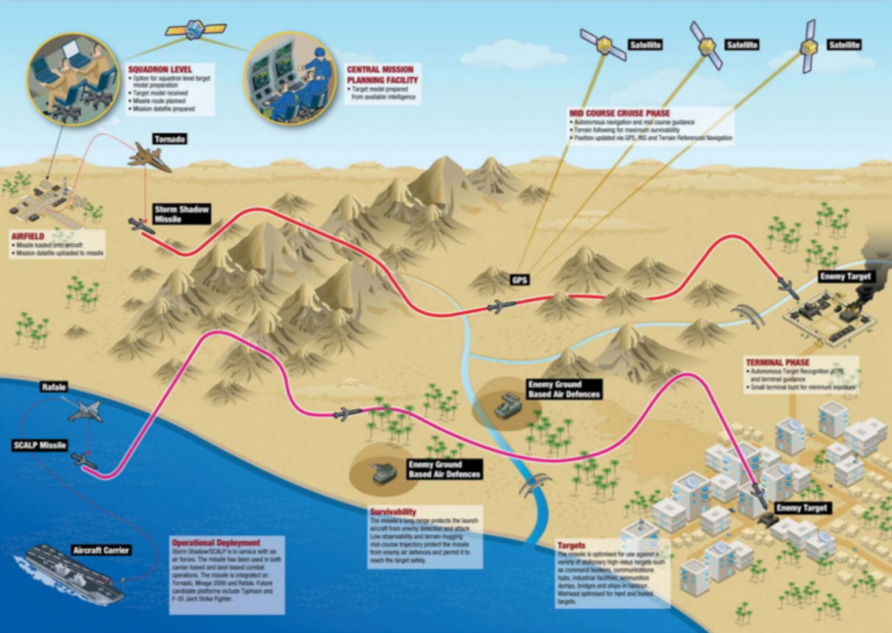
Apart from extreme accuracy, the second element of Storm Shadow’s effectiveness is the sophisticated warhead it carries, the Bomb, Royal Ordnance Augmenting CHarge (BROACH).
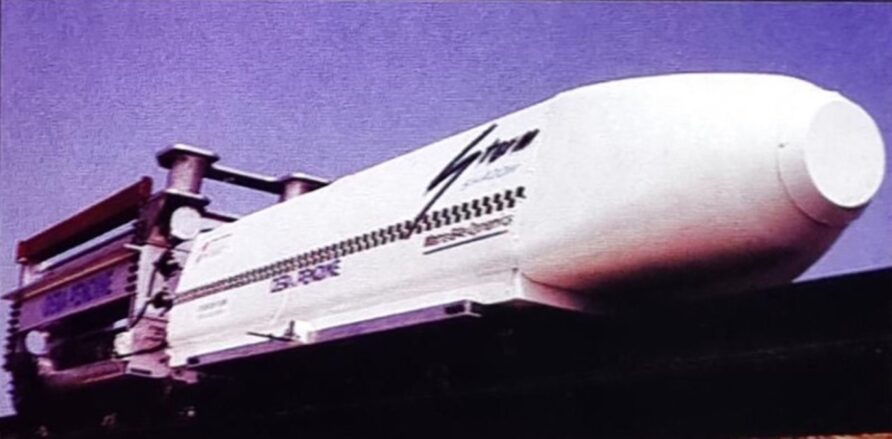
BROACH uses a precursor penetrator charge followed by a follow-through main charge.
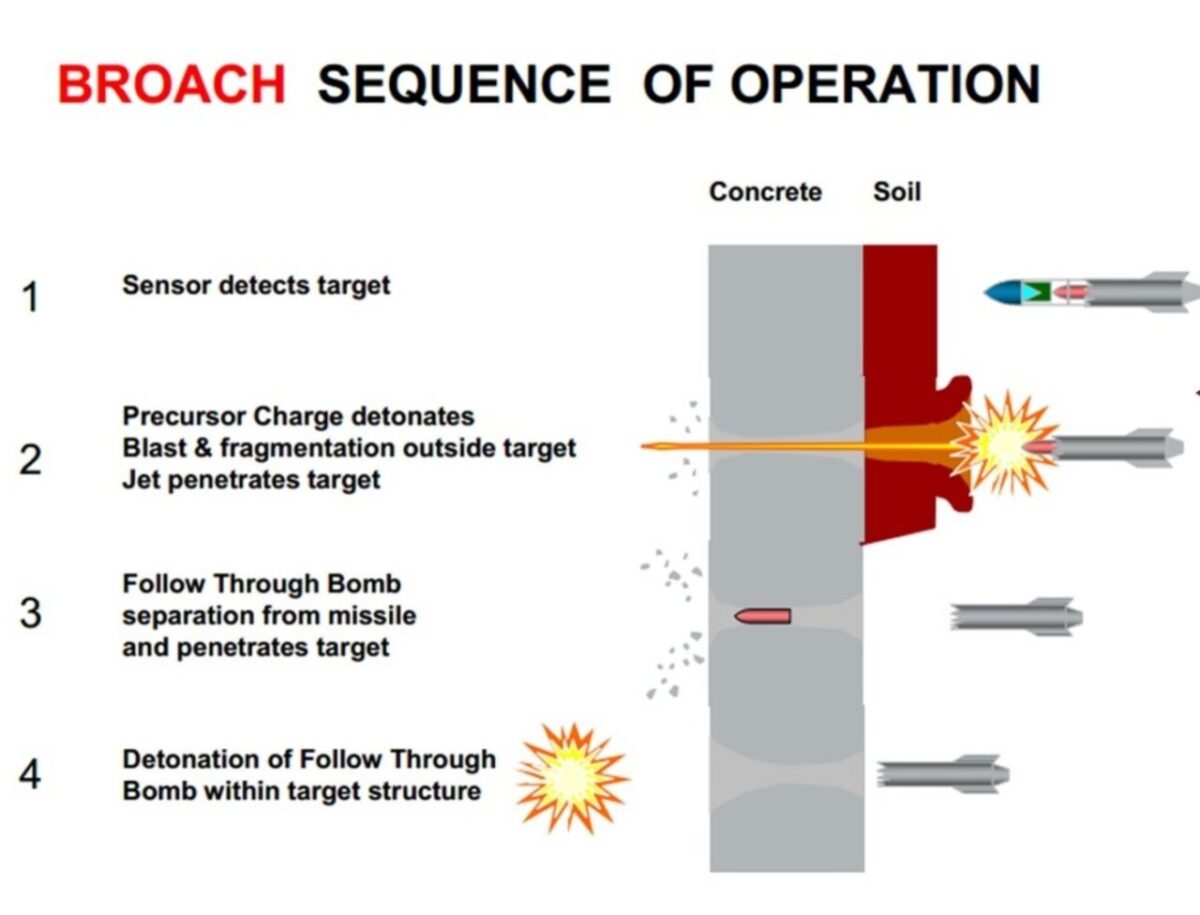
Combined with an advanced fuze (like Paveway IV, from Thales) it has proven to be devastatingly effective.
Entry and exit points are shown in the images below.

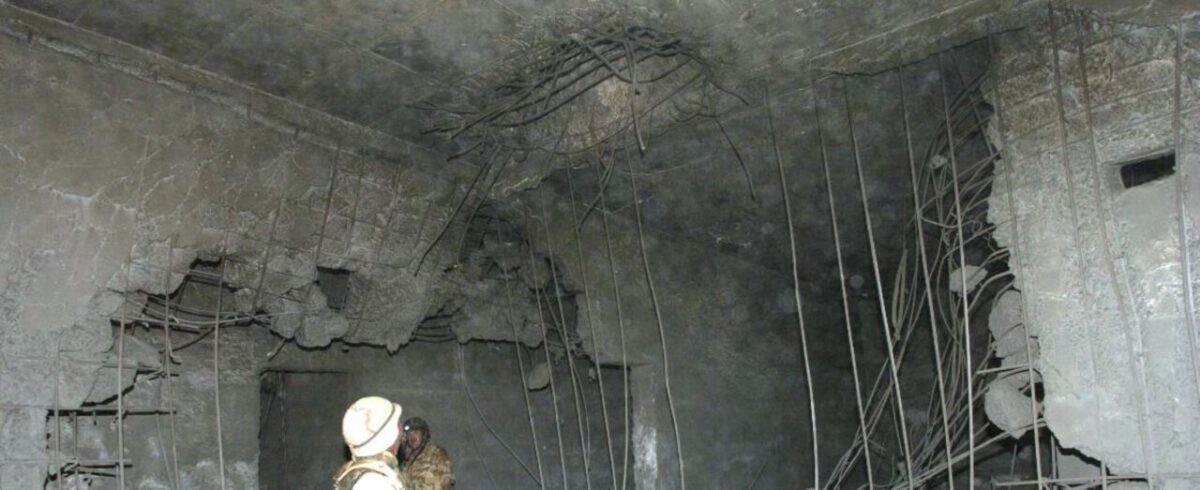
The BROACH warhead has also been employed against targets like bridges.

BROACH is also in service on the US Joint Stand-Off Weapon, AGM-154C.
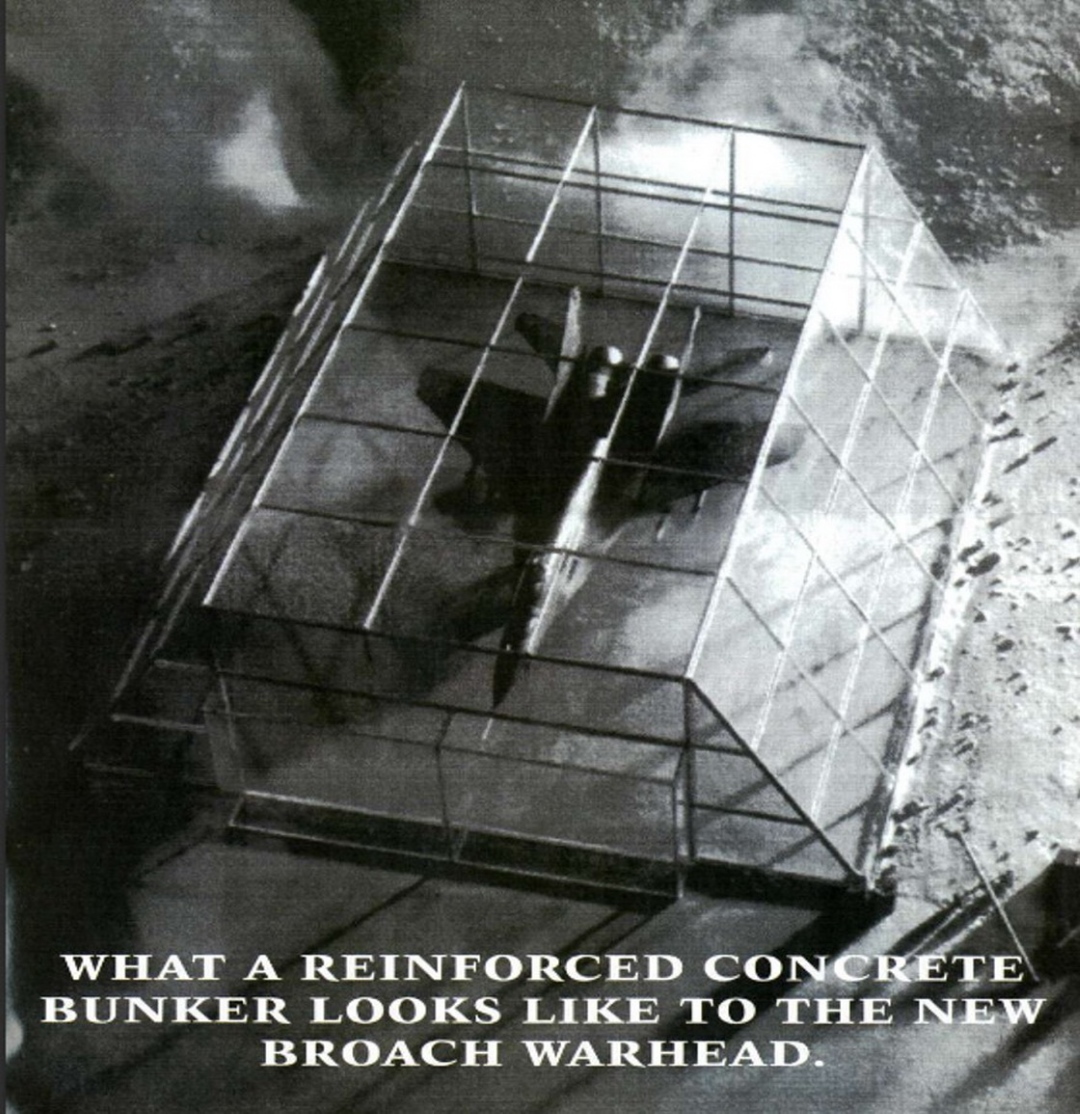
And as we all know, all complex weapons come in an All Up Round Container

A few thoughts on Storm Shadow Range
When Storm Shadow was supplied to Ukraine, there was a great deal of speculation about its range, for obvious reasons.
Storm Shadow is based on the Matra Apache missile, with a range of 140 km.
Matra also proposed a 600 km range version called Apache C, we didn’t buy that.
Storm Shadow is actually based on the Anti Structure version of Apache called Apache AI, this had a range of 250 km.
250 km was the objective range for the RAF’s Conventionally Armed Stand Off Missile (CASOM) requirement, SRA 1236.
MBDA state range is ‘in excess of 250km’
Some firings against ISIS would seem to indicate more than 250 km but nothing official on this.
Don’t confuse SCALP Naval with SCALP EG/Storm Shadow, quite different in many regards, although their range is described as 900 km
Interestingly, Storm Shadow has a peer in the Taurus KEPD, although this weighs 100 kg more and has a different engine, MBDA state this has a range of 500 km plus.
Storm Shadow and Taurus are comparable in many ways, developed at the same time, and physics is physics.
The RAF published a brochure in 2013 that described Storm Shadow range as 300 nm plus, 550 km
You can still see an archived version of the RAF website that also says 300 nm plus
So who do you believe? The manufacturer, the RAF (depending on current or older public materials), other websites or rampant Twitter speculation?
Anything beyond the official range of ‘in excess of 250km’ is speculation, you believe what you want!
The range is subject to many factors, so even a confirmed maximum range of x might not be achieved in condition y.
We keep them vague for a good reason, to keep enemies guessing.
Personally, I am happy to not know, I don’t need to know, those that do, do
Click HERE to read about other UK Complex Weapons
Further Reading and Sources
https://imemg.org/wp-content/uploads/imemts2006_Thomas_1.ppt.pdf
https://www.mbda-systems.com/product/storm-shadow-scalp/
https://en.wikipedia.org/wiki/Storm_Shadow
https://www.airforce-technology.com/projects/storm-shadow-missile/
https://missilethreat.csis.org/missile/apache-ap/

Change Status
| Change Date | Change Record |
| 02/05/2016 | Initial issue |
| 16/07/2021 | Update |
| 06/11/2022 | General update and format refresh |
| 02/08/2023 | Added Ukraine usage information |
| 05/05/2024 | Minor update |
| 29/11/2024 | Added targets in Russia information |
Discover more from Think Defence
Subscribe to get the latest posts sent to your email.

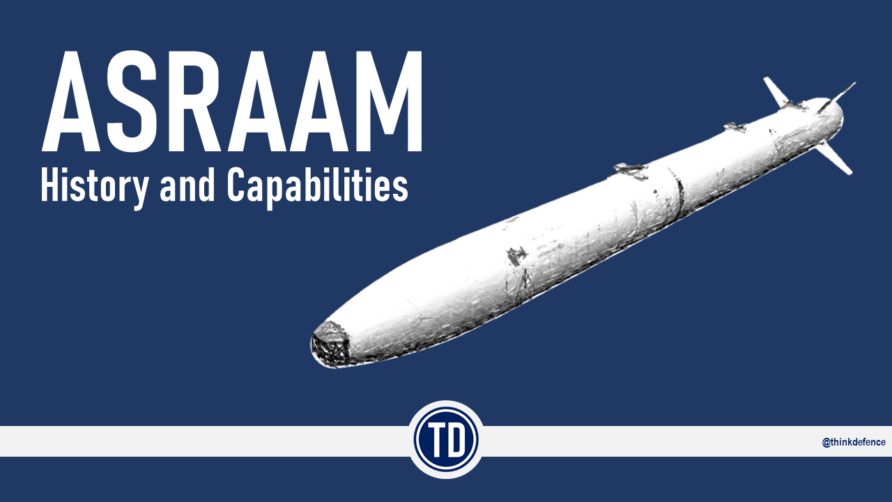


A huge amount of brilliant information.
Wonderful to find out a load about Storm Shadow that I didn't know!